Email marketing continues to be a powerful tool for connecting with customers and growing your business. It is not just about sending newsletters anymore. It has evolved into a sophisticated channel for building relationships and driving sales. As we look toward 2025 and 2026, several key trends are set to redefine what successful email marketing looks like. Staying ahead of these changes will help you keep your emails out of the spam folder and in front of an engaged audience.
This post will explore the most important email marketing trends on the horizon. We will cover how artificial intelligence is changing the game, why interactive content is a must have, and how to make your emails more personal and valuable than ever.
The Top Email Marketing Trends for 2025 and Beyond
Let’s dive into the specific trends that will help you create more effective email campaigns.
1. Hyper Personalization Powered by AI
Generic email blasts are a thing of the past. Today, customers expect content that feels like it was made just for them. Artificial intelligence is making this level of personalization easier to achieve at scale.
AI algorithms can analyze vast amounts of customer data, including purchase history, browsing behavior, and past email interactions. This allows you to send highly targeted messages that resonate with each individual subscriber. Instead of just using a customer’s first name, you can recommend products they will actually love or send content related to topics they have shown interest in.
Real World Example: Spotify’s “Wrapped” campaign is a masterclass in personalization. Each year, it provides users with a summary of their listening habits. This same principle can be applied to email. A clothing retailer could send a year in review email showcasing a customer’s favorite brands and suggesting new items based on their unique style.
Practical Takeaway: Start using the data you already have. Even simple segmentation based on past purchases or engagement levels can make a big difference. Explore your email platform’s AI features or consider tools that integrate with your system to automate personalization.
2. Interactive Email Content
Emails are becoming more like mini websites. Interactive elements allow subscribers to engage with your content without ever leaving their inbox. This not only makes your emails more fun but also increases the time people spend with your brand.
Interactive features can include:
- Polls and surveys to gather feedback
- Carousels to showcase multiple products
- Quizzes to entertain and educate
- Add to cart buttons that work directly within the email
These elements reduce friction and make it easier for customers to take action. When you make things simple, conversion rates often follow.
Real World Example: The travel company Skyscanner once sent an email with an interactive poll asking subscribers where they wanted to go on their next vacation. Based on their answers, the follow up emails were tailored with specific travel deals for those destinations.
Practical Takeaway: Start small. Add a simple poll or survey to your next newsletter. Most modern email marketing platforms support some form of interactive content. You can learn more about creating engaging content from resources like the HubSpot Blog.
3. The Rise of Brand Storytelling and User Generated Content
People connect with stories, not just products. Your emails provide a perfect opportunity to tell your brand’s story and build a community around your values. Share the why behind your business, introduce the people on your team, or highlight the impact your company is making.
Another powerful trend is incorporating user generated content (UGC) into your emails. Featuring customer photos, reviews, and testimonials builds trust and provides social proof. It shows potential buyers that real people love your products.
Real World Example: The shoe brand Allbirds often features customer photos from Instagram in their emails. They show their shoes being worn in real life situations, which is more relatable and authentic than polished product shots.
Practical Takeaway: Encourage your customers to share photos with your products on social media using a specific hashtag. Ask for permission to feature their content in your emails. Also, consider creating a regular email series that tells a part of your brand’s story. Check out our services on content marketing to see how we can help you build a compelling brand narrative.
4. Accessibility and Inclusive Design
Making your emails accessible to everyone is not just good ethics; it is good business. An increasing number of people use screen readers or have visual impairments. If your emails are not designed with accessibility in mind, you are missing out on a significant portion of your audience.
Key considerations for accessible emails include:
- Using high contrast color schemes
- Writing descriptive alt text for all images
- Using a clear and readable font
- Structuring content with logical headings
- Ensuring your email works in both light and dark modes
Real World Example: Major brands like Apple are known for their commitment to accessibility. Their marketing emails are designed with clean layouts, legible text, and thoughtful color choices that work for a wide range of users.
Practical Takeaway: Before you send your next campaign, use an accessibility checklist to review your design. Many email platforms have built in tools to help you check for common issues. A great resource for this is The A11Y Project, which provides helpful accessibility guidelines.
5. Increased Focus on Privacy and Data Protection
With regulations like GDPR and the California Consumer Privacy Act (CCPA), customers are more aware of how their data is being used. Transparency is no longer optional. Brands that are open about their data practices and give subscribers control over their preferences will earn trust and loyalty.
This means being clear about what people are signing up for, making it easy to unsubscribe, and honoring their communication choices. This “zero party data,” or data that customers intentionally share with you, is becoming incredibly valuable.
Real World Example: The New York Times gives subscribers granular control over their email preferences. Users can choose which newsletters they want to receive, from daily briefings to weekly deep dives, ensuring they only get content they truly value.
Practical Takeaway: Review your subscription and preference management pages. Make them clear, simple, and user friendly. Use your welcome email to set expectations and remind subscribers they can update their preferences at any time.
Preparing Your Email Strategy for the Future
The world of email marketing is always changing, but its core purpose remains the same: to build relationships with your audience. By embracing hyper personalization, creating interactive experiences, telling authentic stories, prioritizing accessibility, and respecting user privacy, you can build an email strategy that not only survives but thrives in 2025 and 2026.
Start by choosing one or two of these trends to focus on. Test new ideas, measure your results, and listen to your subscribers. With a thoughtful approach, your email program can become one of your most valuable marketing assets.
If you need help navigating these changes, contact us at MoDuet. Our team of experts can help you craft an email marketing strategy that drives results.
We Want To Talk To You About Your Marketing Goals.
Let’s Supercharge Your Online Growth!











